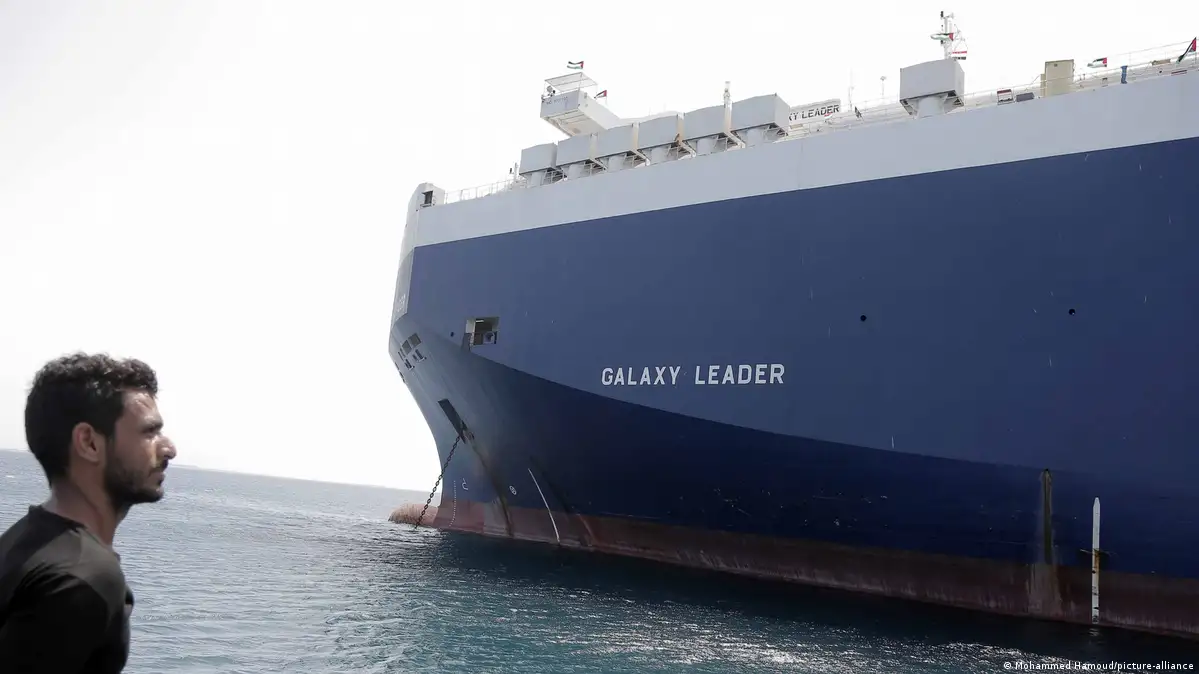
The significance of the Red Sea shipping route for global trade is enormous. But for over six months now, Houthi militias from Yemen have been attacking ships in the region for their owners’ or operators’ ties to Israel. The attacks come as Israel executes its war against the militant group Hamas in Gaza following its massacre of Israeli citizens on October 7 of last year.
On June 20, for instance, the Houthis, who say they are fighting for the Palestinian cause, sank a coal ship with a drone strike.
In response to the Houthi attacks, US and British military vessels have repeatedly targeted militia positions in Yemen over the past several months. Additionally, warships from two international coalitions are operating in the region to secure maritime traffic along the Yemeni coast. The German Navy, for one, is part of the EU naval mission Aspides.
Shipping costs are rising again
Global trade has been under immense pressure since the Israeli-Hamas war broke out in October. The offshoot conflict in the Red Sea has meant higher freight costs and increased expenses for insuring commercial trade goods.
Shipowners are confronted with higher insurance premiums as the risk of losing a vessel has dramatically increased, above all, in the Red Sea. Moreover, moves to avoid the Suez Canal for safety reasons and instead navigate around the Cape of Good Hope, have greatly increased travel times and led to significantly higher fuel consumption.
The Drewry World Container Index, which monitors the freight market, reported that within the third week of June alone shipping prices for a 40-foot standard container jumped 7% — up a staggering 233% compared with the same time a year ago.
Searching for safer routes
Simon MacAdam, an analyst at the London-based financial consulting firm Capital Economics, says shipping companies are being forced to become more flexible.
“The shipowners have seemingly adapted quite well to the situation, considering the limitations on using the Suez Canal,” he told DW, adding that costs briefly dropped this spring “after skyrocketing in January.”
But now “they are starting to rise again,” suggesting there is no reason to expect any cost relief.
“Another driver seems to be that importers are currently moving up orders to ensure they have enough goods in stock throughout the year. But with ships being rerouted around the Cape of Good Hope further price spikes are more likely,” the Capital Economics expert said.

More ships needed
Jan Hoffmann, a trade expert at the United Nations Conference on Trade and Development (UNCTAD), also blames longer travel times around Africa for rising costs.
“The detour around South Africa requires more ships to maintain supply. The average travel distance for a container in 2024 is 9% further than it was in 2022,” he told DW.
As ships spend more time at sea, more shipping space is needed, he said. That means shipping companies have to charter or buy more vessels and hire more personnel. “And since these ships do not yet exist, freight prices will rise.”
Hoffmann also pointed to another unwelcome side-effect of longer shipping routes: rising greenhouse gas emissions. “Ships have increased their speeds, which has led to a rise in emissions, for example, by 70% on the Singapore-Rotterdam route.”
Trouble in Central America
Apart from safety concerns in the Middle East, global trade is also being hampered by low water levels in the Panama Canal, said Hoffmann. That means the waterway cannot be fully utilized. As a result, US shippers have had to integrate what he calls a “land bridge” into their sea routes with East Asia, meaning they have to transport goods across the US by rail or road from West Coast ports to those on the US East Coast.

Shipping bulk commodities like wheat or liquefied natural gas (LNG) across the US is economically unviable, he added, leaving shippers with no alternative to the very long and dangerous detour route around Cape Horn on the southern tip of South America.
But Simon MacAdam nevertheless sees some light at the end of the tunnel as far as a return to normal Panama Canal shipping is concerned. Water levels in the canal, he told DW, have “recovered somewhat” in recent months, and the La Nina weather phenomenon should “further ease the situation soon.” A slight rise in water levels in the Panama Canal has already increased freight transport there, added MacAdam.
Red Sea to stay dangerous, making global shipping crisis ‘even worse’
According to Bloomberg, around 70% of Red Sea trade is still being rerouted around Africa.
Simon MacAdam believes a prolonged crisis could overwhelm shipping companies and significantly boost freight rates further.
“Building ships takes many years, and 90% of new containers are built in China. Higher capacities cannot be achieved overnight,” the Capital Economics expert told DW, warning that the crisis in the industry could get “even worse.”
Source: DW














